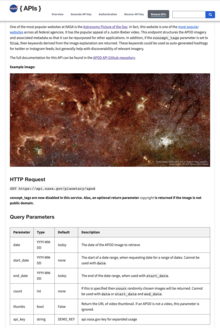An Application Programming Interface (API) is a critical software component that facilitates communication between two applications. It streamlines the coding process by concealing the complex underlying implementation and revealing only the necessary elements or functions. This principle, originating in the 1940s, has expanded to encompass hardware interfaces and has become a cornerstone in contemporary software creation. APIs serve diverse functions, such as data transfer, interaction with operating systems, and the amalgamation of services to produce new applications. They are instrumental in business growth and integration with external services. Key elements of API management include effective design, documentation, versioning, and security protocols. Moreover, APIs carry substantial legal connotations and are frequently the targets of cyber threats. OpenAPI, an API design framework, aids in standardizing and enhancing the interoperability[1] of APIs.
An application programming interface (API) is a way for two or more computer programs or components to communicate with each other. It is a type of software interface, offering a service to other pieces of software. A document or standard that describes how to build or use such a connection or interface is called an API specification. A computer system that meets this standard is said to implement or expose an API. The term API may refer either to the specification or to the implementation. Whereas a system's user interface dictates how its end-users interact with the system in question, its API dictates how to write code that takes advantage of that system's capabilities.

In contrast to a user interface, which connects a computer to a person, an application programming interface connects computers or pieces of software to each other. It is not intended to be used directly by a person (the end user) other than a computer programmer who is incorporating it into the software. An API is often made up of different parts which act as tools or services that are available to the programmer. A program or a programmer that uses one of these parts is said to call that portion of the API. The calls that make up the API are also known as subroutines, methods, requests, or endpoints. An API specification defines these calls, meaning that it explains how to use or implement them.
One purpose of APIs is to hide the internal details of how a system works, exposing only those parts that a programmer will find useful, and keeping them consistent even if the internal details change later. An API may be custom-built for a particular pair of systems, or it may be a shared standard allowing interoperability among many systems.
There are APIs for programming languages, software libraries, computer operating systems, and computer hardware. APIs originated in the 1940s, though the term did not emerge until the 1960s and 1970s. Contemporary usage of the term API often refers to web APIs, which allow communication between computers that are joined by the internet. Recent developments in APIs have led to the rise in popularity of microservices, which are loosely coupled services accessed through public APIs.
